Last night, I logged on to Ford’s Mustang Mach-E live stream event along with at least 75,000 other interested viewers. While the production quality of the event was high, it was a bit overly scripted and – in a word – campy. However, the event served its purpose, successfully sharing information about Ford’s upcoming all-electric Mustang Mach-E while chipping away at some of the apprehensions current car buyers have about electric vehicles. Overall, the event was well-researched, and Ford continued the work of other automakers such as Audi, GM, Jaguar, and Porsche in attempting to clear up misconceptions about electric vehicles and EV ownership.

Along the way, though, an interesting thing happened. As Ford unveiled the Mach-E’s exterior design, showed off the large center screen, and popped open a rather cool front trunk, I started to see murmurs from viewers in chat who were claiming that Ford simply copied Tesla. Since then, I’ve seen comments such as “This should have been called the Mock-E!” and even stories from Tesla-friendly news sites who are referring to the Mach-E as an imitation Tesla. However, the Mustang Mach-E is far more than just a Tesla derivative. In fact, take a look at Torque News reporter Eric Evart's recent story discussing the advantages of Ford Mach-E over Tesla.
In many ways, the Mach-E is actually a return to the original Ford Mustang, which came about as the result of a process called “backward design.” Essentially, the design team is given a specific set of criteria, so the resulting product is dictated by those initial constraints. To me, it is quite obvious that the Mustang Mach-E design team was tasked with addressing the most common concerns and criticisms voiced by the electric vehicle community, so it shouldn’t be a surprise that the result resembles a Tesla product (another company whose cars are guided by community feedback).
In this story, I will review some of the Ford Mach-E’s basic features and configurations, and along the way, I’ll explain how the Mach-E isn’t a just copy of Tesla products but rather is a direct response to criticisms and requests from the electric vehicle community.
Ford Mustang Mach-E Configurations
The Ford Mach-E will be available in five configurations, ranging in price from $43,895 to $60,500 before incentives. These trim options include all-wheel drive and rear-wheel drive options as well as the choice between a 75.7 kWh and 98.8 kWh battery pack. The AWD configurations with the larger battery pack will output 332 horsepower, while the GT configurations will output 459 horsepower. Here’s a quick breakdown of the Mach-E’s trim levels.
Select
The Select trim is the entry-level model, which comes with an estimated range of 230 miles in the RWD version and a mid 5-second 0-60 mph acceleration in the AWD version. The Select trim starts at $43,895 and should be available in early 2021.
Premium
The Premium trim will provide an estimated 300 miles of range in the RWD model, and should sprint to 60 mph in the mid 5-second range in either the AWD or RWD version. The Premium trim starts at $50,600 and should be available in late 2020.
California Route 1
The California Route 1 trim is a RWD version with an estimated range of 300 miles and a mid 6-second 0 to 60 mph time. This trim starts at $52,400, and Ford expects it to be available in early 2021.
First Edition
The First Edition trim is an AWD platform with 270 miles of estimated range and a mid 5-second 0 to 60 mph time. This is a limited edition that starts at $59,900 and will be available in late 2020.
GT
The GT trim is the AWD performance version of the Mach-E, and it will have 235 miles of estimated range with a mid 3-second 0 to 60 mph time. The GT will start at $60,500 and should be available in Spring of 2021.
Ford is actually the first automaker outside of Tesla to offer this variety of trim levels on an electric vehicle. This shouldn’t be a surprise, though, as it is a common practice within Ford’s brand. In fact, providing several trim options was one of the five goals for the original Mustang design team back in the early 1960s: The original Mustang needed to have several, comfort, luxury, and power options.
Watch comparing the 2021 Ford Mustang Mach-E price with the Tesla Model 3, Audi E-Tron, Jaguar I-Pace and click to subscribe to Torque News Youtube channel for daily automotive news analysis.
By doing this, the Mach-E also addresses some common criticisms from the EV community who have questioned why automakers continue to offer electric vehicles as front-wheel drive platforms (a holdover from restrictions imposed by an internal combustion engine) with no option for all-wheel drive or a smaller battery pack (which helps lower cost).
Mustang Mach-E Cargo Capacity
Because Ford designed the Mach-E from the ground up as an electric vehicle, they were able to open up a lot of cargo capacity that isn’t normally available on internal combustion platforms. They were able to provide 29 cu/ft of behind the seat cargo capacity, and with the seats folded down, the Mach-E can swallow up to 59.6 cu/ft of cargo.

In addition to standard storage, the Mach-E has a 4.8 cu/ft front trunk with a drain plug (in case you want to use it as a cooler). While I’ve heard criticisms that Ford was just copying Tesla’s front trunk feature, they aren’t the only automaker to add a front trunk where the internal combustion engine traditionally sits. Audi, Jaguar, Porsche, and Rivian have also adopted the front trunk feature; however, because of the size and versatility of the Mustang Mach-E’s front trunk, I think Ford simply did it better.
Mustang Mach-E Center Screen
Automakers have been moving toward large, central touchscreen displays, and the Mustang Mach-E is no exception. It provides a portrait oriented, 15.5 inch screen powered by Ford’s own SYNC® software system; however, this is possibly my least favorite aspect of the Mach-E from both a hardware and a software perspective.
The Mustang Mach-E’s center display is reminiscent of the Tesla Model 3 (which has a similarly sized screen in landscape orientation). However, in my opinion, these displays are the weakest aspect of either vehicle's design, and in both cases, the screens are poorly integrated. The screens are simply too large for the surface they are mounted to, leaving the impression that they are an afterthought in the design process. Essentially, Ford (and Tesla) wanted to shoehorn in the biggest screen they could, and they simply mounted it wherever it would fit.

Also, similar to Tesla and VW Group, Ford decided to continue using their own communications and entertainment system. The Mach-E will receive the next-generation SYNC system, which learns driver preferences and receives over the air updates. My experiences with earlier SYNC systems left a lot to be desired, but I will withhold judgment on this updated system until after I have a chance to test the Mach-E’s SYNC system out for myself.
My initial inclination is to prefer GM and Volvo’s direction, which is to outsource the car’s operating system to actual tech companies like Google (both GM and Volvo vehicles will be running off of the Android operating system) rather than trying to manage the software and programming in-house; however, it will be years before we see which strategy was actually the best. Ford is definitely out to prove that Detroit can hold its own with Silicon Valley, so this will be a space to watch.
Charging the Ford Mach-E
In my opinion, Ford did a good job addressing some of the concerns and misconceptions about recharging electric vehicles. During the livestream, they referenced the National Renewable Energy Laboratory’s (NREL) findings that 80% of electric vehicle charging is done at home. That doesn’t get emphasized enough, and if anything, those numbers are conservative. When the NREL first conducted that survey, the average range of electric vehicles was still about 100 miles. With long-range electric vehicles like the Mach-E, owners can expect to do as much as 95% of their charging at home.
With that in mind, Ford plans to offer their Mach-E customers a “Ford Connected Charging station” that will add up to 32 miles of range per hour on a home 240 V outlet. Mach-E customers will also get a 240 V “Ford mobile charger” (capable of adding 22 miles per hour) that they can use when traveling to see friends and family, while camping, or as an emergency backup. A couple of regular criticisms EV owners have for most modern electric vehicles is slow onboard AC chargers and the lack of a quality mobile connector. Until now, Tesla has been the only company to successfully address those concerns, but it appears Ford has designed the Mustang Mach-E with those issues in mind.
The next thing Ford addressed head on was the myth that non-Tesla electric vehicle owners won’t have enough places to charge away from home. While Ford hasn’t yet funded the build out of public chargers in North America, they did create a “network” for their owners, linking 12,500 public charging sites with more than 35,000 charging plugs under a single “FordPass Charging Network” that is integrated with their SYNC system.
Likewise, for their European audience, Ford emphasized the fact that they were a founding partner with the Ionity Network, and they provided a similar access plan to public chargers for their European customers. This not only addresses a chronic criticism from EV owners that most electric vehicles don’t have an “integrated network of chargers like the Supercharger Network,” it also dispels the myth that there aren’t enough public fast chargers. In reality, there are about three times as many public fast charging locations in North America as there are Supercharger sites.
Some non-Tesla electric vehicle owners are already aware of the breadth, size, and speed of the public charging infrastructure (as illustrated by my recent Chevy Bolt EV road trips story), but for those who simply want to drive without having to plan their routes, that might not be obvious. Ford’s integrated charging network feature should empower their drivers to take advantage of the robust public charging infrastructure, and I’m really looking forward to seeing some inspiring Ford Mach-E road trip stories.
Mustang Mach-E DC Fast Charging Speeds
One area where I don’t like Ford’s framing of the Mach-E’s capabilities is when they describe its fast charging speed. According to Ford, when using one of the faster, 150 kW public DC chargers, the Mustang Mach-E will add 47 miles of range in 10 minutes. Now, I understand that they want to keep the time low (hence the “10 minutes” reference); however, the counterpoint is that 47 miles simply isn’t that far. By comparison, the Tesla Model 3 can add nearly double that much range in the same amount of time.

GM and Nissan are using a 30-minute time frame, which I think is more appropriate. The Chevy Bolt EV and Nissan LEAF can add 100 miles of range in 30 minutes, so I feel it would be a much better comparison for Ford to illustrate that the Mustang Mach-E can add over 140 miles in 30 minutes.
In fact, what is most impressive about the Mach-E’s charging rate is that it can charge from 10% to 80% battery in just 38 minutes. That’s only about 10 minutes longer than it would take to do the same in the Tesla Model 3, which means that while the Mustang Mach-E has a slower peak charging rate than the Model 3, it has a more consistent charging speed overall. That means that a Mach-E driver doesn’t have to run the battery to near empty in order to see its fastest charging speeds, and they don’t have to feel bad about making a more convenient 35 to 40 minute dinner stop because their car will be charging at a fairly rapid rate the entire time.
This is evidence to me that Ford was designing the Mustang Mach-E based on feedback from the EV community, who have been very vocal in their criticism of inconsistent charging speeds and "step downs" in charging rates. Electric vehicles such as the Chevy Bolt EV, Hyundai Kona Electric, and Kia Niro EV all require about an hour to charge to 80%, so the Mach-E represents a significant improvement in convenience on longer trips. At this point, the only long-range electric vehicle with a similar charging profile is the Audi e-Tron, but I hope to see more automakers adopt this charging profile in the future.
Ford Is Now Accepting Mustang Mach-E Reservations
At the live stream, Ford stated that they would start accepting reservations immediately after the event. Unfortunately, it appears that the reservation site didn’t open right away, so Ford might have missed out on a bit of that buzz.
Also, the Mustang Mach-E reservation does require a $500 refundable deposit; however, they have restricted deposits to specific configurations. The problem here is that someone who knows they want a Mach-E but is undecided about which configuration might be reluctant to put down a $500 deposit. I think Ford would be much better served to follow Tesla’s model and simply accept any deposit that can be later applied to whichever configuration the customer might want.
Conclusion
After sleeping on it for a night, I’m actually more impressed with the Ford Mustang Mach-E than I was initially. Ford put a lot of thought and work into the Mach-E’s design and configuration, so my only real concern at this point are how well those features and functions are implemented. Ford has struggled with their early electrified platforms, and my family’s own C-MAX had to visit our local Ford service center nearly a dozen times in the first year and a half. Still, Ford made things right, fixing all the issues and completing all the recalls and required updates.
As an EV advocate, it was also refreshing to see Ford pushing back so strongly against electric vehicle misconceptions and myths that I, myself, have been working so hard to dispel. Up until now, no one has really fought back against the narrative that non-Tesla electric vehicles are nothing more than “city cars,” but Ford looks ready to do just that. By including the thousands of public fast charging sites under a single, integrated system, Ford will give Mustang Mach-E owners the confidence to travel all over the United States.

Mustang Mach-E deliveries will start in just over a year, so I have a little time to decide whether the Mach-E will be the car to replace my Chevy Volt. From what I’ve seen so far, it just might be.
Be sure to check out Torque News's other coverage of the Ford Mustang Mach-E.
Update: Ford Mustang Mach-E is sold out.
About The Author
Eric Way focuses on reporting expert opinion on GM brand electric vehicles at Torque News. Eric is also an instructional designer and technical writer with more than 15 years of writing experience. He also hosts the News Coulomb video blog, which focuses on electric vehicles, charging infrastructure, and renewable energy. Eric is an active member of the EV Advocates of Ventura County, a volunteer organization focused on increasing the widespread adoption of electric vehicles. You can follow Eric on News Coulomb Youtube, on Facebook at @NewsCoulomb as well as on Twitter at @eway1978.








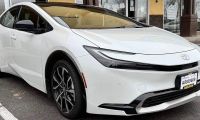
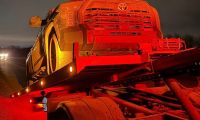
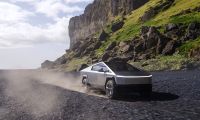
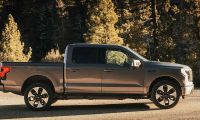
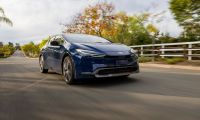
Comments
Thanks Eric. It's good to
Permalink
Thanks Eric. It's good to have Ford in the game. I hope it sends a message to GM.
Paul
Great article, thanks for
Permalink
Great article, thanks for posting!
You are spot on with the 47 miles in 10 minutes characterization. In those terms, it's actually not particularly compelling. However, I'm really interested to see how Ford's DC fast charging time measures up in real life with their 98.8kWh battery and 150kW fast chargers.
Ford says on their media site that the smaller 78kWh pack will charge to 80% in 38 minutes but I haven't been able to find anything on if the larger pack matches or beats the smaller one's profile.
Do you think that Ford is actually sandbagging the performance specs of the Mach-E? In an interview with Autoline, Dave Pericak, Global Director, Ford Icons, said that unlike other manufacturers who claim 300 miles of range but then fall short, the Mach-E will legitimately do 300 miles.
On a broader note, the CCS network is growing big time both geographically and numerically. I just hope that other providers besides EA step up their charge rates from 50kW to 150kW or more.